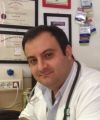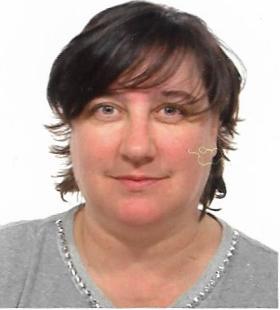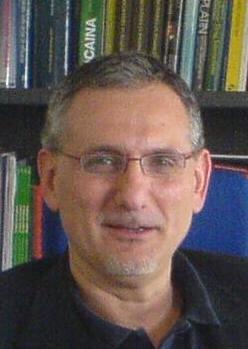Studying at the University of Verona
Here you can find information on the organisational aspects of the Programme, lecture timetables, learning activities and useful contact details for your time at the University, from enrolment to graduation.
Academic calendar
The academic calendar shows the deadlines and scheduled events that are relevant to students, teaching and technical-administrative staff of the University. Public holidays and University closures are also indicated. The academic year normally begins on 1 October each year and ends on 30 September of the following year.
Course calendar
The Academic Calendar sets out the degree programme lecture and exam timetables, as well as the relevant university closure dates..
| Period | From | To |
|---|---|---|
| INF BZ - 1° anno 1° sem | Oct 3, 2017 | Dec 21, 2017 |
| INF BZ - 3° anno 1° sem | Oct 9, 2017 | Dec 21, 2017 |
| INF BZ - 2° anno 1° sem | Oct 9, 2017 | Dec 21, 2017 |
| INF BZ - 1° anno 2° sem | Jan 29, 2018 | Apr 23, 2018 |
| INF BZ - 3° anno 2° sem | Mar 15, 2018 | Apr 27, 2018 |
| INF BZ - 2° anno 2° sem | Apr 23, 2018 | Jun 8, 2018 |
| Session | From | To |
|---|---|---|
| INF BZ- sessione invernale 1-2-3 anno | Jan 8, 2018 | Jan 31, 2018 |
| INF BZ- sessione estiva 1-2 anno | Jun 11, 2018 | Jun 22, 2018 |
| INF BZ- sessione estiva 3 anno | Jun 18, 2018 | Jun 29, 2018 |
| INF BZ- sessione autunnale 1 anno | Sep 12, 2018 | Sep 29, 2018 |
| INF BZ- sessione autunnale 2 anno | Sep 20, 2018 | Sep 28, 2018 |
| INF BZ- sessione autunnale 3 anno | Sep 24, 2018 | Oct 4, 2018 |
| Session | From | To |
|---|---|---|
| 1^ SESSIONE | Oct 1, 2018 | Nov 30, 2018 |
| 2^ SESSIONE | Mar 1, 2019 | Apr 30, 2019 |
| Period | From | To |
|---|---|---|
| All Saints Day | Nov 1, 2017 | Nov 1, 2017 |
| Festa Immacolata Concezione | Dec 8, 2017 | Dec 8, 2017 |
| Vacanze natalizie | Dec 22, 2017 | Jan 7, 2018 |
| Easter break | Mar 30, 2018 | Apr 3, 2018 |
| Liberation Day | Apr 25, 2018 | Apr 25, 2018 |
| Republic Day | Jun 2, 2018 | Jun 2, 2018 |
| Description | Period | From | To |
|---|---|---|---|
| INF BZ 3° anno 1^ esp | INF BZ 3° anno 1^ esp | Feb 2, 2018 | Mar 14, 2018 |
| INF BZ 2° anno 1^ esp | INF BZ 2° anno 1^ esp | Feb 12, 2018 | Mar 16, 2018 |
| INF BZ 2° anno 2^ esp | INF BZ 2° anno 2^ esp | Mar 19, 2018 | Apr 21, 2018 |
| INF BZ 1° anno 1^ esp | INF BZ 1° anno 1^ esp | May 2, 2018 | Jun 8, 2018 |
| INF BZ 3° anno 2^ esp | INF BZ 3° anno 2^ esp | May 2, 2018 | Jun 12, 2018 |
| INF BZ 1° anno 2^ esp | INF BZ 1° anno 2^ esp | Jun 25, 2018 | Jul 29, 2018 |
| INF BZ 3° anno 3^ esp | INF BZ 3° anno 3^ esp | Jul 2, 2018 | Aug 4, 2018 |
Exam calendar
Exam dates and rounds are managed by the relevant Medicine Teaching and Student Services Unit.
To view all the exam sessions available, please use the Exam dashboard on ESSE3.
If you forgot your login details or have problems logging in, please contact the relevant IT HelpDesk, or check the login details recovery web page.
Should you have any doubts or questions, please check the Enrollment FAQs
Academic staff
Augschiller Martha
 liliana.favari@univr.it
liliana.favari@univr.it
 astrid.kustatscher@claudiana.bz.it
astrid.kustatscher@claudiana.bz.it
 sylvia.lintner@sabes.it
sylvia.lintner@sabes.it
 m.mussner@virgilio.it
m.mussner@virgilio.it
Study Plan
The Study Plan includes all modules, teaching and learning activities that each student will need to undertake during their time at the University.
Please select your Study Plan based on your enrollment year.
1° Year
| Modules | Credits | TAF | SSD |
|---|
Professional Laboratories (1st year)
2° Year activated in the A.Y. 2018/2019
| Modules | Credits | TAF | SSD |
|---|
Professional Laboratories (2nd year)
3° Year activated in the A.Y. 2019/2020
| Modules | Credits | TAF | SSD |
|---|
Professional Laboratories (3rd year)
| Modules | Credits | TAF | SSD |
|---|
Professional Laboratories (1st year)
| Modules | Credits | TAF | SSD |
|---|
Professional Laboratories (2nd year)
| Modules | Credits | TAF | SSD |
|---|
Professional Laboratories (3rd year)
Legend | Type of training activity (TTA)
TAF (Type of Educational Activity) All courses and activities are classified into different types of educational activities, indicated by a letter.
Professional Laboratories (1st year) [Gruppo 2] (2017/2018)
Teaching code
4S000104
Teacher
Coordinator
Credits
1
Language
Italian
Scientific Disciplinary Sector (SSD)
MED/45 - NURSING
Period
INF BZ - 1° anno 1° sem, INF BZ - 1° anno 2° sem
Location
BOLZANO
Learning outcomes
LABORATORY: "CARE AND HYGIENE OF THE BODY"
At the end of the workshop the student is able to:
• recognize the standard precautions for the control of healthcare-related infections and the principles of waste disposal to be applied to the proposed situations;
• perform hand hygiene (with water and soap and alcoholic friction) proving to be able to rub the hands according to the procedure (-HOW guidelines, 2009, with 3-5 ml of alcohol solution for 30 seconds);
• wear and remove the disposable gloves demonstrating to choose the gloves of the appropriate measure, remove the gloves avoiding contact between the skin of the hands and the outer surface of the glove;
• wear and remove the sterile gloves demonstrating to choose the gloves of the appropriate measure, wear the gloves without touching their external surface, remove the gloves avoiding contact between the skin of the hands and the outer surface of the glove;
• wear and remove personal protective equipment (mask, goggles and gloves) according to the.
LABORATORY: "APPLYING THE PRINCIPLES OF SURVEILLANCE AND SAFETY IN ASSISTANCE"
During the workshop the student
1. Recognizes the principles of surveillance and safety and applies them to a case of nursing care
2. Simulate the detection of vital parameters demonstrating to apply the principles of prevention of transmission of infections by direct and indirect contact
3. Document the parameters on thermographic.
LABORATORY: "CARE AND HYGIENE OF THE BODY"
At the end of the workshop the student is able to correctly execute:
• recognize the material for the procedures of: bed-bathing, oral hygiene, intimate hygiene in men and women; on the basis of a welfare situation, discusses possible alternatives to the procedure and to the treatment approach in the execution of the bath in bed;
• performing, by peer care, facial care and oral hygiene according to the procedure: applying the safety rules (hand hygiene, use of gloves, mask and goggles) and hygiene principles, discussing the experience of "contact with the body";
• perform - on a manikin wearer of permanent bladder catheter - the procedure for intimate hygiene in men and women demonstrating, to be able to: recognize and prepare the material, apply the safety rules (hand hygiene, use gloves and mask) and hygienic principles, dispose of the used material correctly;
• carry out the assistance to the dressing and the remake of the bed by applying the standard precautions for the control of infections related to the assistance (performing the alcoholic clutches of the hands according to guidelines, using the disposable gloves according to procedure), the principles of ergonomics (choosing the right height of the bed) and safety principles (informing the patient and adopting safe behaviors in the mobilization).
LABORATORY: "POSITIONING A BLADDER CATHETER"
At the end of the workshop the student is able to:
simulate the placement of a permanent bladder catheter on a mannequin (woman), demonstrating
• recognize the material
• apply the principles of antisepsis (hand hygiene, disinfection of the work surface, disinfection of the perineal area before catheterization) to the procedure
• guarantee the asepsis in the management of the sterile field (use of sterile gloves and execution of aseptic maneuvers in the field)
• to guarantee the asepsis in the management of the bladder catheter (maintenance of the sterility of the bladder catheter until its introduction into the urethra.
LABORATORY: "POSITIONING THE PERSON" 12-13.04.2018
At the end of the workshop, the student is able to:
1. Identify the areas at risk of decubitus in: practice the following positions: posterior, position 30 °, abdominal position, 135 ° position, sitting position;
2. Place the patient in the bed for food intake. In doing so, the student pays attention to the hip, to the upright position, to the anti-slip brake and to the sole of the foot, to the person to be positioned.
In carrying out the activities the student is able to:
• inform patients
• pay attention to your own safety and that of the patient
• Respect patient resources and promote them
Program
LABORATORY: "CONTROL OF INFECTIONS RELATED TO ASSISTANCE" 28-29.03.2018
Organization:
08.25 - 08.30 Students convening
08.30 - 08.40 Welcome to the student group
08.40 - 09.30 FIRST STATION Students face situations in which they apply standard precautions.
Discussion of the case in a group
09.30 - 11.30 (scheduled 15 min break) SECOND STATION Students practice sub-group on hand hygiene, wear and dispose disposable and sterile gloves, put and remove PPE:
• procedure reconstruction (guided by the tutor)
• guided and peer exercise
• familiarization with the material
11.00 - 12.00 Individual feedback
12.00 - 12.15 Debriefing and approval
Second Day Same Program
LABORATORY: "CARE AND HYGIENE OF THE BODY" 03-04.04.2018
08.25 - 08.30 Students convening
08.30 - 08.50 Student group reception
08.50 - 09.10 Simulation of the tutor procedure for the student group
09.10 - 09.40 Reconstruction of the procedures
Familiarization with the material. Group discussion
09.40 - 10.00 PAUSE
10.00am - 11.00am Familiarization and guided exercise
Free exercise and peer comparison
11.00 - 11.40 Individual feedback
11.40 am - 12.00 am Debriefing and approval
Second Day Same Program
LABORATORY: "POSITIONING A BLADDER CATHETER TO STAY" 05-06-09.04.2018
08: 30-8.45 Opening
8.45-9.00 Watch the movie
9.00-9.45 Reconstruction of the procedure
9.45.10.30 Exercise on removal and placement of the catheter
10.30-10.45 Pause
10.45-11.30 Exercise in pairs, with supervision of the tutor
11.30-12.30 Certification and feedback
12.30-13.00 Debrieifng and liking
Second and third day same program
LABORATORY: "APPLYING THE PRINCIPLES OF SURVEILLANCE AND SECURITY IN THE ASSISTANCE" 10-11.04.2018
08.30 - 08.50 Reception and sharing of objectives
08.50 - 11.00 Analysis of the case of the stage with a view of video footage discussion with the guide questions of the film
11.00-11.30 PAUSE
11.30-11.45 Short resumption of the steps of the procedure:
"DETECTING AND DOCUMENTING PA, FC, FR TO A CAREFUL PATIENT IN THE DEPARTMENT"
(hand-information friction and patient assessment-parameter detection and documentation).
11.45-12.45 Guided and peer-based exercise
12.45-13.00 Debriefing and approval
Second day same program
LABORATORY: "POSITIONING THE PERSON" 12-13.04.2018
08.30 - 09.00 Presentation of daily routine and laboratory objectives
Getting started: Recognize areas subject to pressure sores in different positions
09.00 - 09.45 Apply correctly the difference between a micro and a macro bearing based on the lateral position of 30°
09.45am - 10am break
10.00 -10.45 135 ° Correct use of the abdominal position with micro and macro positioning
10:45 am - 11:30 am Positioning of the upper body in bed for food intake + training time
11.30 -12.00 Certification of the positioning of the upper body in bed with individual feedback
12.00-12.15 Debriefing, feedback sheet
Second day same program
| Author | Title | Publishing house | Year | ISBN | Notes |
|---|---|---|---|---|---|
| Thieme Verlag : siehe Auflistung Fachbeiräte und Mitarbeiterverzeichnis | Pflege I care (Edizione 1) | Georg Thieme Verlag | 2015 | 978-3-13-165651-3 | |
| Saiani-Brugnolli | Trattato di cure infermieristiche (Edizione 3) | Sorbona | 2020 | 9788879477314 | |
| Annette Lauber, Petra Schmalstieg | Wahrnehmen und Beobachten (Edizione 3) | Georg Thieme Verlag | 2012 | 978-3-13-128593-5 |
Examination Methods
Not expected
Career prospects
Module/Programme news
News for students
There you will find information, resources and services useful during your time at the University (Student’s exam record, your study plan on ESSE3, Distance Learning courses, university email account, office forms, administrative procedures, etc.). You can log into MyUnivr with your GIA login details: only in this way will you be able to receive notification of all the notices from your teachers and your secretariat via email and soon also via the Univr app.
Gestione carriere
Orario lezioni
COMUNICAZIONE DEL PRESIDENTE DEL COLLEGIO DIDATTICO
Carissime Studentesse,
Carissimi Studenti,
di seguito un promemoria relativo alle modalità di erogazione della didattica per il corso di studio in Infermieristica A.A. 2022/2023.
In ottemperanza alle linee guida della Commissione didattica di Ateneo, che prevedono una didattica improntata ad un pieno recupero delle modalità regolari di erogazione in presenza, la Commissione didattica del CdL nella seduta del 29 settembre 2022, ha deliberato il pieno ritorno all’utilizzo della didattica frontale in presenza.
Solo nei casi di comprovata positività al COVID-19, e/o in situazioni di particolare fragilità (sempre correlate alla pandemia) sarà previsto il collegamento sincrono in modalità streaming; a tal proposito ogni Docente, sulla propria pagina web, darà chiare indicazioni sulla modalità di fruizione della didattica.
La modalità asincrona (registrazioni delle lezioni) non è prevista.
Nell’augurarvi un buon Anno Accademico, vi saluto cordialmente
Prof. Paolo F Fabene
Guida ai programmi degli insegnamenti
Guida ai programmi degli insegnamenti
Documents
| Title | Info File |
|---|---|
|
|
pdf, it, 1594 KB, 12/12/22 |
|
|
pdf, it, 1310 KB, 02/09/21 |
Linee guida per riconoscimento cfu
Lo studente che intende chiedere il riconoscimento di moduli o insegnamenti pregressi dovrà presentare domanda, entro il 30 novembre dell’anno accademico in corso, seguendo le indicazioni indicate al link seguente: https://www.univr.it/it/i-nostri-servizi/segreterie-studenti/gestione-carriere-studenti-medicina-e-chirurgia/riconoscimento-crediti-acquisiti-da-una-carriera-pregressa-medicina
Documents
| Title | Info File |
|---|---|
|
|
pdf, it, 295 KB, 09/11/21 |
Student login and resources
Attività didattiche regime part-time
Modalità di richiesta
La domanda di iscrizione part-time può essere presentata all'inizio di ogni anno accademico e comunque entro il 30 novembre di ogni anno. Entro lo stesso termine, se necessario, lo studente potrà richiedere di tornare al regime full-time. Al link seguente la pagina del servizio https://www.univr.it/it/i-nostri-servizi/segreterie-studenti/flessibilita-nella-frequenza-dei-corsi/possibilita-di-iscrizione-part-time-e-ripristino-full-time
Una volta inviata la domanda, lo studente concorda in via preventiva con il Coordinatore della didattica professionale (CDP), il piano di studi che intende perseguire nel periodo di part-time compilando il modulo in allegato
Documents
| Title | Info File |
|---|---|
|
|
octet-stream, it, 1309 KB, 21/10/22 |
Graduation
Documents
| Title | Info File |
|---|---|
|
|
pdf, it, 242 KB, 19/01/24 |
|
|
pdf, it, 80 KB, 06/04/24 |
|
|
pdf, it, 43 KB, 06/04/24 |
|
|
pdf, it, 44 KB, 09/04/24 |
|
|
pdf, it, 148 KB, 06/04/24 |
|
|
pdf, it, 108 KB, 06/04/24 |
|
|
pdf, it, 115 KB, 06/04/24 |
|
|
pdf, it, 1487 KB, 18/02/22 |
|
|
pdf, it, 437 KB, 22/03/24 |
|
|
pdf, it, 957 KB, 22/03/24 |
|
|
pdf, it, 424 KB, 19/01/24 |

 +39 045 8027657
+39 045 8027657









